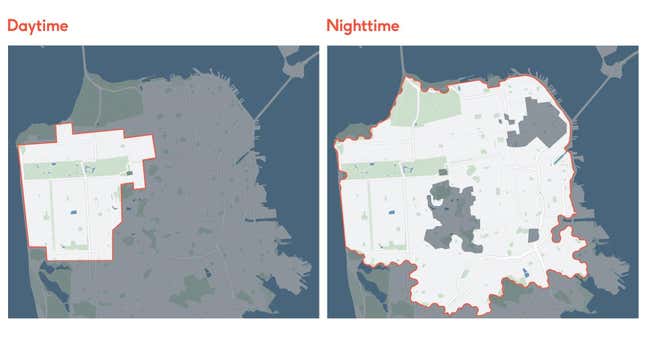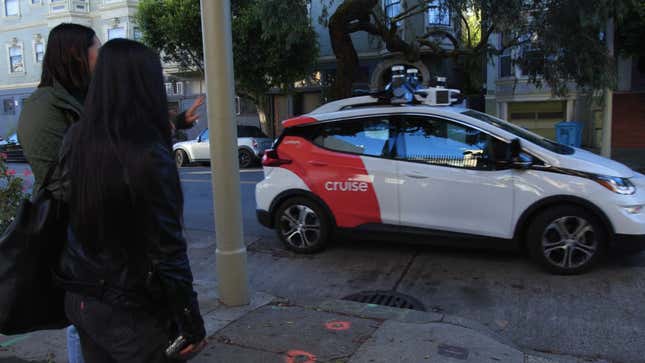Cruise is now offering daytime driverless rides in its autonomous vehicles for users in San Francisco. Finally, after months of the self-driving taxi service being limited to nighttime fares, the little Cruise AVs — based on the Chevy Bolt EV — are being released into the hills of San Francisco to pick up passengers in the cold light of day.
Cruise CEO Kyle Vogt celebrated the achievement on Twitter, saying the first daytime ride took place early on Thursday morning and added that the service will soon be available to the public. Daytime rides in Cruise AVs are currently only open to select users of the ride-hailing service, but the tech-heavy General Motors subsidiary says it working toward a wider roll out the robotaxi service.
Part of that expansion will include merging the company’s day and nighttime service areas where its Chevy Bolt EV robotaxis roam — and where they also happen to be notorious for stalling. There have been a few cases so far of Cruise servers crashing shortly after the tiny robotaxis started operating without human drivers onboard to act as failsafes. Without a human driver, the Cruise AVs stopped operating, which left some passengers stranded at night and also blocked emergency vehicles.
As if the server crashes and subsequent stalling weren’t enough, Cruise’s self-driving cars have also been in a number of car crashes since testing began and, after, when the driverless ride-hailing service started taking fares at night in San Francisco. That’s presumably why Cruise is being cautious about opening up the daytime service to the public, and why it’s doing so in a stepped approached.

The GM-owned Cruise is adamant about the need for safe transportation that’s reliable and also available at night; the company positioned its focus on night drives as a safer alternative to driving at so-called dangerous times. Even if that’s true, traffic tends to be denser in the daytime. More drivers, more cars and more pedestrians raise the stakes for autonomous vehicles, which are still trying to iron out the kinks.
It’s been a long time and has cost a ton of money to finally get actual self-driving cars and partially self-driving cars to a point where a major auto manufacturer like GM can commercialize robotaxis, and accept the liability that comes with it.

